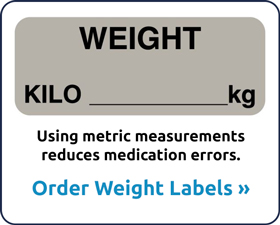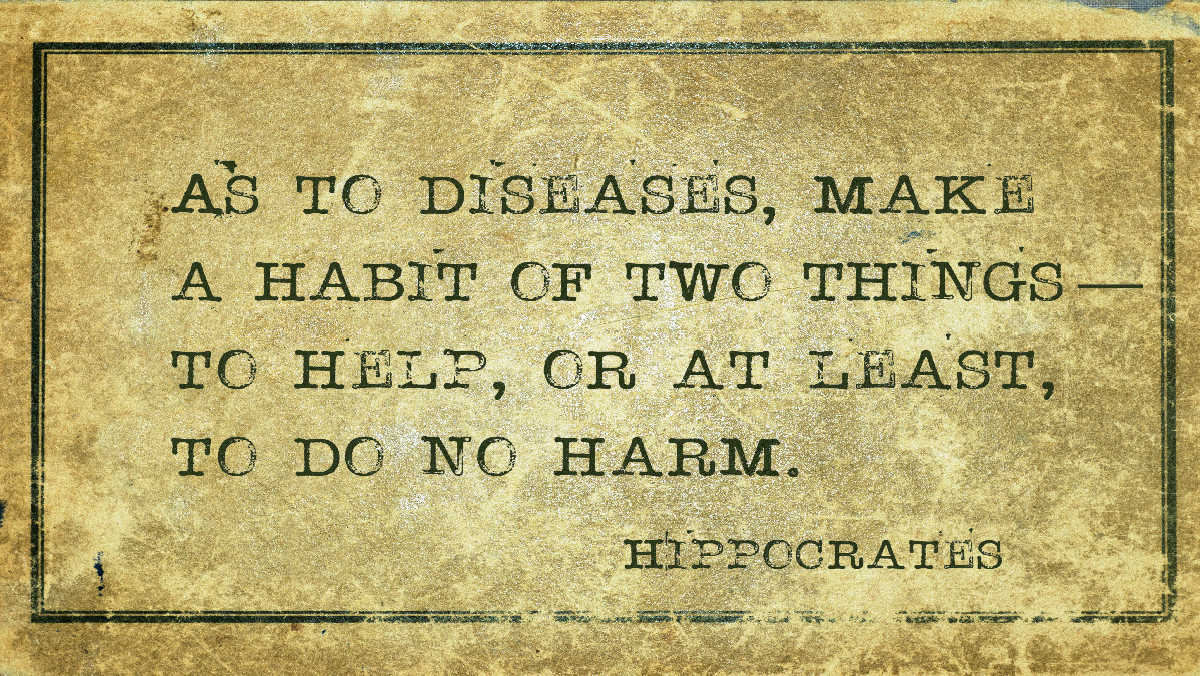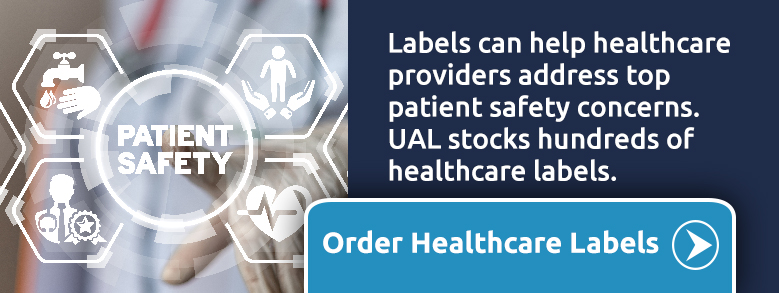Did Hippocrates think that his oath would have such a long-lasting impact when he first wrote it in 400 BC? In fact, whether it’s the actual wording or some derivation, medical students make that same promise at graduation and white coat ceremonies today. In addition, many nurses make a similar pledge, called the Nightingale Pledge, attributed to Florence Nightingale. Regardless of the type of oath or other modern-day professional codes a medical professional lives by, avoiding patient harm is a common thread in each one. But ensuring patient safety through the spectrum of care requires more than an oath. It requires a system-wide commitment and a multidisciplinary approach.
Patient Safety Concerns
Today, organizations that include:
- The Leapfrog Group which publishes the Leapfrog Hospital Survey on safety and quality
- The Joint Commission’s National Patient Safety Goals
- Top 10 Patient Safety Concerns Report by ECRI
- And more…
Bring further awareness to the importance of patient safety and actions that improve the quality of care. The ongoing collection and compilation of data by these organizations and others, help to identify the top patient safety concerns. In fact, it’s essential to identify those top concerns in order to formulate patient safety improvements.
What Are The Main Patient Safety Concerns For 2023?
In 1855, French writer Jean-Baptiste Alphonse Karr wrote the now famous quote, “The more things change, the more they stay the same.” That same statement applies to 2022 patient safety concerns because many of the top challenges from previous years remain challenges today.
But, not all are identical. For example, workplace violence and pediatric mental health challenges have both increased, creating an additional set of patient safety complications for healthcare providers to tackle.

Top 10 Patient Safety Concerns
But, when assessing various sources that study patient safety, the top 10 patient safety concerns fall into these common categories:
- Patient identification accuracy - Patient identification mistakes create a ripple effect that can impact everything from a proper diagnosis and administering the wrong medications to performing the wrong procedures and more.
- Caregiver communication - Timely and effective caregiver-patient communications can increase patient satisfaction, enhance patient adherence to medication and treatment regimes, reduce medical errors, ensure prompt treatments for life-threatening situations and improve clinical outcomes.
- Medication safety - Adverse drug events, often caused by medication errors, remain among the most common types of inpatient errors. Mistakes also impact vaccine administration. For example, occurrences of improper COVID-19 vaccine formulations and mix-ups between the flu and COVID-19 vaccines have been reported.
- Clinical alarm systems and telemetry monitoring - Although these systems allow the clinical staff to monitor patients from a distance, alarm fatigue, equipment malfunctions, battery issues, cyber security disruptions and more, increase the risk of patient harm.
- Infection prevention - preventing infections remains a difficult and ongoing challenge for healthcare providers. Although occurrences of C diff and MRSA are declining slightly, they still cause 3 million infections and 48,000 deaths annually. Plus, COVID added another twist to the infection prevention process that made past flu seasons seem insignificant.
- Surgery verification - The administration of general anesthesia or deep sedation are procedures that put a patient at the most risk. Research from Johns Hopkins and Patient Safety highlight the wrong site surgery and other errors that occur during surgical procedures.
- Mental health - Concern for pediatric mental health was already high during the 2010s due to the growing use of social media, limited access to pediatric behavioral health providers, drug and alcohol use, gun violence, and socioeconomic impact. And then, in 2020, COVID. Depression developed at a young age is more likely to continue into adulthood if left untreated.
- Violence against healthcare staff - Healthcare workers suffer from more workplace violence than any other professionals except law enforcement and security personnel and mental health workers. In January 2022, The Joint Commission accreditation standards began requiring leadership to develop and enforce a workplace violence prevention program.
- Inpatient injuries - Falls, trauma and very severe pressure ulcers fit into the category of preventable harm due to missed care. Another preventable event is non-ventilator healthcare-associated pneumonia (NV-HAP) which occurs in 1 of every 100 hospitalized patients with mortality rates that range from 15% to 30%.
- Inpatient care and coordination - Staffing challenges have led to more floating nurses which often results in assignments outside their competency. In fact, a 2022 national survey of registered nurses found that 26% reported being floated or reassigned to a clinical area outside their competency or that required new skills, and 46% reported not receiving any preparation before reassignment. In addition, chronic disease, especially in older adults, often creates care coordination challenges. Patients with multiple chronic conditions often have complex needs that are prone to care fragmentation, worse health outcomes and more adverse events than other patients.
RRD, UAL’s parent company, analyzed the recent patient-as-customer (PaC) shift, where patients are taking a more active role in choosing how they receive care. Read what this means for providers in this blog post on RRD.com.
What Are The Main Steps To Improving Patient Safety?
Patient safety isn’t a fix-it-and-forget-it problem nor one that impacts only certain departments. It takes a system-wide commitment and ongoing vigilance to improve current processes and navigate the new challenges that will inevitably surface. But as much as good design principles can mitigate some safety issues, many patient safety improvements come down to communication. Developing appropriate protocols, educating and reinforcing those standards and effectively communicating with other staff members and patients can help eliminate many potential safety issues.
For example, the Agency For Healthcare Safety And Research (AHRQ) recommends making time to engage patients and families. This approach brings significant benefits to patient safety and especially the medication safety, caregiver communication, staffing challenge and patient well-being areas.
They suggest following these four evidence-based strategies:
- Reduce errors and improve visit efficiency by setting the visit agenda together. Although “not enough time” is a common challenge for providers and may result in a greater time commitment upfront, when patients did write down an agenda, 74% of clinicians and 79% of patients agreed that communication improved and more than 80% of clinicians wanted to continue the practice.
 Encourage safe medicine practices by creating a safe medicine list as the first line of defense against medication errors. The CDC and AHRQ estimate 160,000,000 prescribing errors occur annually. Creating this list can help uncover a number of issues including:
Encourage safe medicine practices by creating a safe medicine list as the first line of defense against medication errors. The CDC and AHRQ estimate 160,000,000 prescribing errors occur annually. Creating this list can help uncover a number of issues including:- Overdosing unintentionally by taking both the generic and name-brand medicines
- Using outdated prescriptions
- Taking supplements that negatively interact with their prescription medicines
- Improve communication and health literacy through teach-backs. In a teach-back, the clinician asks the patient or family member to explain in their own words, the instructions they need to follow. Why? Because they don’t remember. In fact, one study found that 80% of the medical information was forgotten immediately and another study found that nearly half of the information they retained was incorrect.
- Support collaborative communication using the warm handoff plus. The Warm Handoff Plus takes place between two members of the healthcare team and the patient and/or family member. This engagement serves as a safety check and is a reliable and effective method to improve patient safety and clinical outcomes.
RRD, UAL’s parent company, outlined why surveys are essential to improving the patient experience. Read how providers can better listen to their patients in this blog post on RRD.com.
How Does UAL Help Improve Patient Safety
UAL helps healthcare providers improve patient safety through labels that communicate, guide, and instruct patient care and improve clinical outcomes. For example, UAL supplies numerous solutions for patient safety including:
- Patient Identification - Identifying patients accurately and matching the patient’s identity with the correct treatment or service is a critical factor in patient safety. Admission labels and wristbands provide positive patient identification and communicate other important information to the medical staff including allergies, fall risk and other medical alerts.
- Caregiver Communication - Effective caregiver communication promotes continuity and improves clarity among the clinical staff and helps prevent errors. Communication labels capture and convey important results for quick action.
- Medication Safety - Both caregivers and patients play an important role in preventing adverse drug events. So do various medication labels. Anesthesia drug labels aid medication dispensing by helping to prevent confusion, misidentification, dispensing errors and overdosing. Medication instruction labels guideproper dosing for both the caregiver and the patient.
- Clinical Alarm Systems and Telemetry Monitoring - Effective alarm and telemetry monitoring are crucial to patient care. But, if the alarms don’t work, the clinical staff doesn’t know they need to respond. Equipment inspection and maintenance status labels provide preventive maintenance, service, testing, repair and status update information.
- Infection Prevention - Hand hygiene remains the most effective way to prevent infections. But, it takes ongoing vigilance to get caregivers, staff, patients and visitors to comply. Infection control labels placed in key locations throughout the facility increase awareness and the importance of taking proper precautions.
- Surgery Verification - The surgical time out performed in the operating room immediately before the planned procedure is designed. The surgical time out and preoperative checklist labels ensure accurate patient identity, surgical site, and planned procedure.
- Falls - Acutely ill patients, those on certain medications or ones with strength, mobility, or balance problems are all at a higher risk of falls. Applying labels to wristbands, charts and doors communicates that elevated risk to caregivers.
- Non-Ventilator Healthcare-Associated Pneumonia (NV-HAP) - Difficulty swallowing can potentially lead to NV-HAP. Adding swallowing precautions labels to wrist bands and medical charts and and highlighting potential concerns using screening for dysphagia labels can help minimize NV-HAP occurrences.
RRD, UAL’s parent company, explored the evolving healthcare landscape. Read how providers can navigate the increased competition in this blog post on RRD.com.
United Ad Label
United Ad Label produces stock and custom labels that help address patient safety concerns that healthcare organizations face throughout their operation. You can see our entire selection of stock products here. Or if your patient safety labeling needs call for a custom product, our Custom Label Designer allows you to design, price, proof and order custom labels online.
Editor's Note: This post was updated in July 2023 to reflect updated patient safety concerns.

